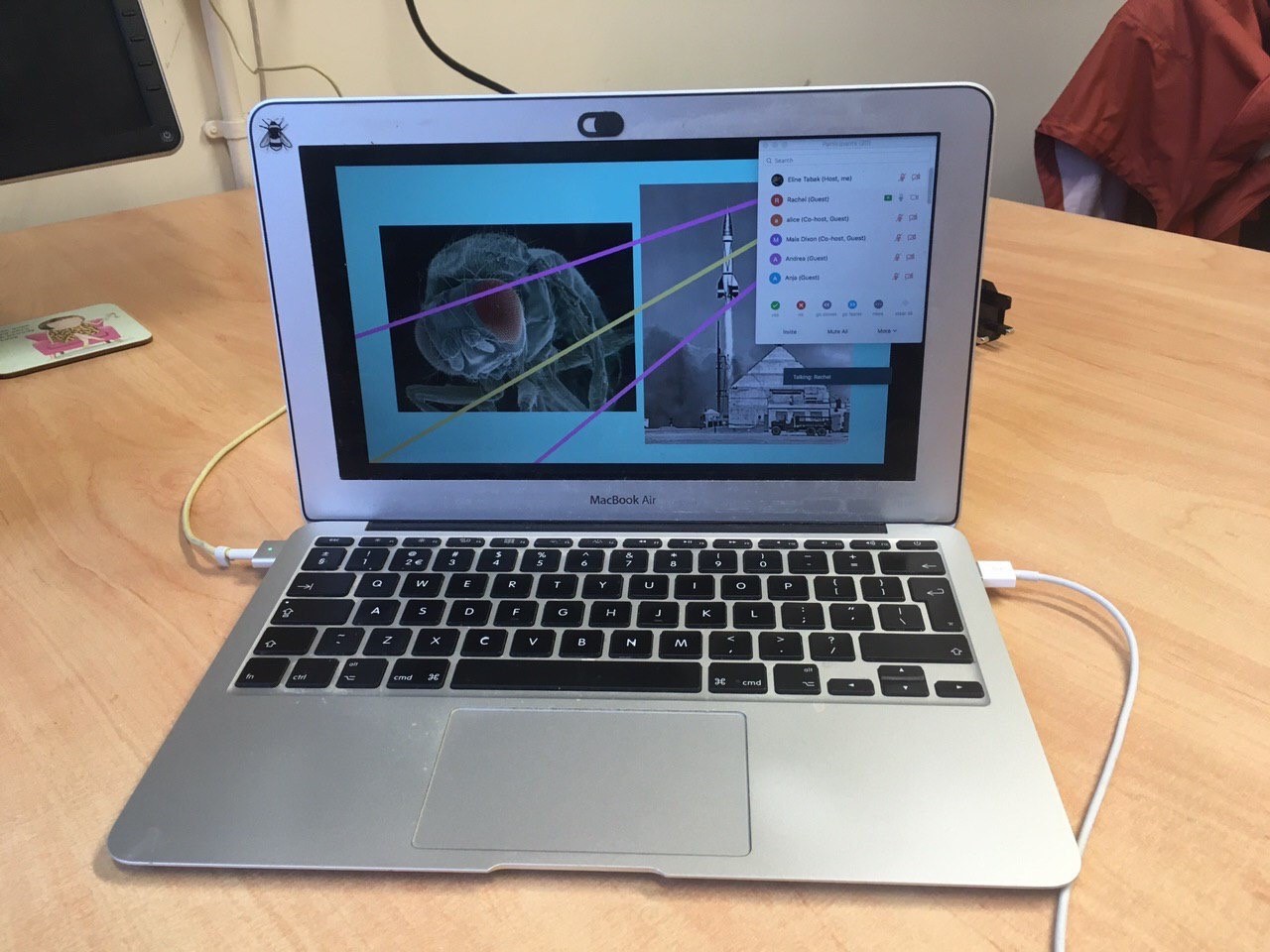by Eline D. Tabak
The ‘Insect Entanglements’ workshop’s CFP was first shared online in the last week of February, when the effects of Covid-19 were still vaguely taking shape in the periphery of our academic community. Perhaps naively so, we—that is, my co-organiser Maia and I—spent some time thinking about how many participants we could host, whether or not we wanted to allow non-presenting attendees into the room, and where to get the best vegan lunch in Bristol. In the following weeks—after receiving cancellations, postponements, and some very reasonable updates saying “we simply don’t know yet”—we decided to move the workshop online. After all, insect entanglements had always been about inclusions and exclusions, and this way we hoped to include as many people as possible. In our online workshop, we had participants based in the States, Canada, Norway, Germany, the Netherlands and the UK. While it’s definitely not the same as everybody meeting in the same room, we know the workshop would not have been open to so many people—not just academics in the field of environmental humanities—had it been hosted in Bristol. This, at the very least, was a good thing to come from moving the event online.

To me, the workshop felt like a follow-up to two previous events: the first being the interdisciplinary symposium, ‘On Bees and Humans: A Love Affair Between Nature and Culture,’ organised by Dr Anja Buttstedt and Dr Solvejg Nitzke at the B CUBE Center for Molecular Bioengineering, TU Dresden. The second was ‘The Insectile’ workshop, organised Dr Fabienne Collignon and Jonas Neldner at the Internationales Kolleg Morphomata at the Universität zu Köln. I was lucky enough to present some of my own research on insect entanglements during these events and was extremely happy to see some familiar faces with new ideas in the Insect Entanglements workshop. Granted, it’s to be expected that you get to know scholars in the field (or subfield of a subfield), but I’m always eager to meet new people, hear new ideas, and again and again realise that so many people are working on such exciting new research. (And it needs to be said: there was some really exciting new research presented at the workshop.)
Entanglements are rather fashionable right now, and when we first put out the CFP we received a question forcing us to reflect on what exactly such an entanglement entails. In true PhD fashion, we deflected the question and said that there’s no such thing as a single entanglement, but that we were sure we would figure it out during the workshop. The original CFP cited Eva Haifa Giraud, who, in her remarkable book What Comes After Entanglements? (2019), does not pull any punches and immediately forces us to recognise that with (any) politics of entanglement also comes a reality of exclusion. With that in mind, we wrote to all our presenters asking them to critically reflect on what their research (proposed or already conducted and written) could potentially mean for the same bugs they would later present on. This question does not always invite an obvious answer, especially when your research brings you to, say, early modern England or famous still life paintings of the Low Countries—even contemporary installation art.
Our first panel, ‘Bug Materialism’, was made up by researchers Rachel Hill (Strelka), Kay McCrann (University of Portsmouth), and Katharina Alsen (Hamburg University of Music and Theatre). This panel brought together a wide range of research that was distinctly material: the life and death of flies in space, line-drawing practices as a way of connecting with the natural history archives, and the aforementioned art installations focusing on not just the theoretical and philosophical aspects of these entanglements, but also their material lives. The second panel, ‘Ways of Looking’, found Anja Buttstedt (B CUBE) and Rosamund Portus (University of York) talking about different bee species and Fabienne Collignon (University of Sheffield) on the different forms of the gaze. The combined presentations really highlighted the importance of looking—and looking with care—when it comes to the more than human world around us. Our last panel, ‘Storied Entanglements’, was comprised by Sheng-mei Ma (Michigan State University), Marguerite Happe (Literature, UCLA) and Eric Stein (Trinity Western University). Covering a range of topics, from game studies to early modern literature to sinophone literatures in the twentieth century, these three presentations again brought to the forefront the joy and importance of telling a good story when thinking about and thinking through the insect (and worm-like) other.
At the end of the day (specifically after spending around eight hours in an office looking at two tiny laptop screens) we still didn’t have a definite answer to the question of what constitutes an insect entanglement. Reflecting on our workshop and the diverse presentations, I also know that between the storied, the material, and the different ways of looking at insects, there isn’t supposed to be a single answer. Insect entanglements are situated and unique things—not wholly surprising when there are over a million described species out there. As mentioned before, to me this felt like the third in a series of events on what I now dare to call cultural entomology, and I’m very much looking forward to more.
On a final note: when people signed up we asked them what their favourite insect was. Here are the results:



Reblogged this on bitten by the bug bug.